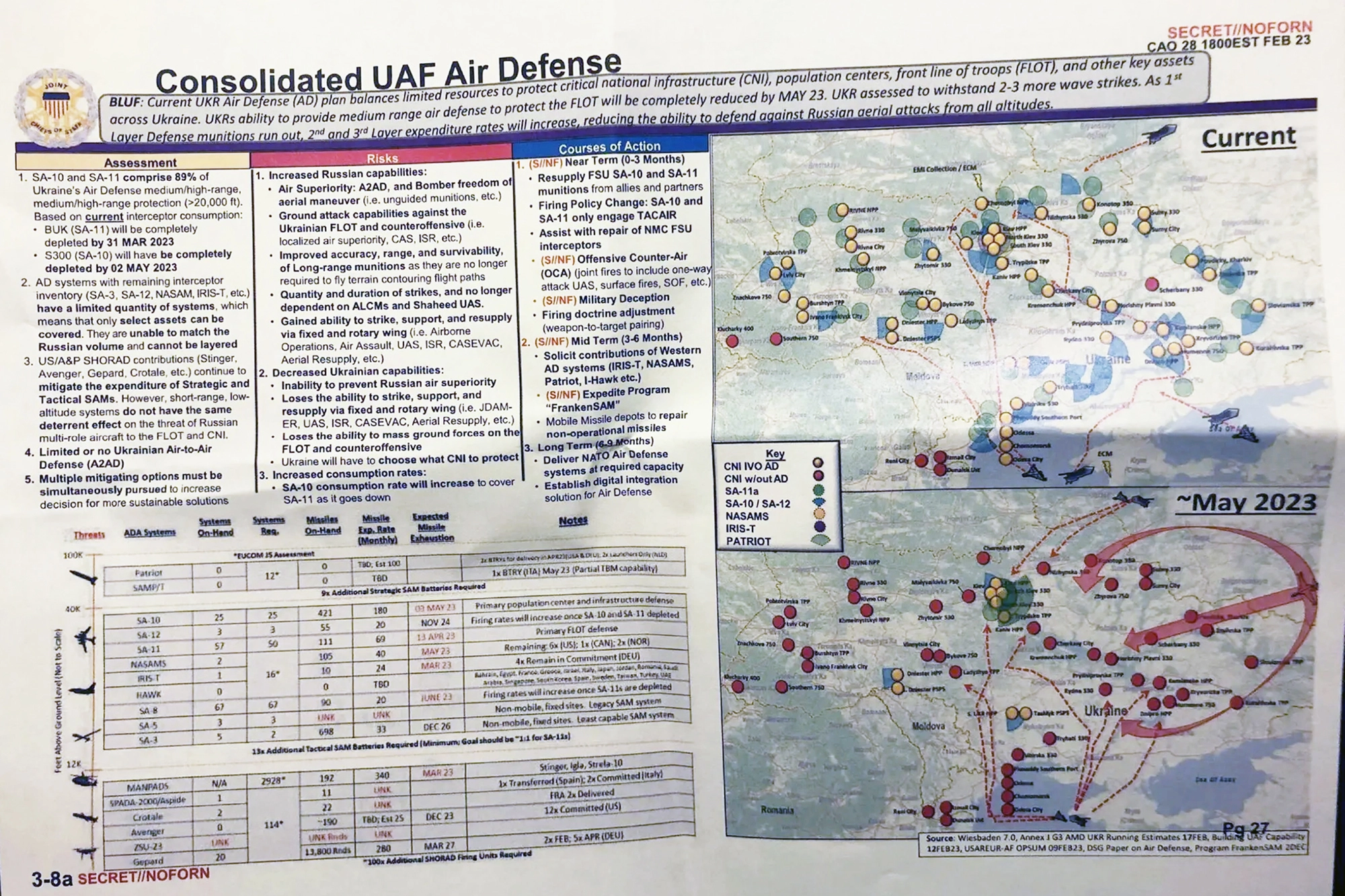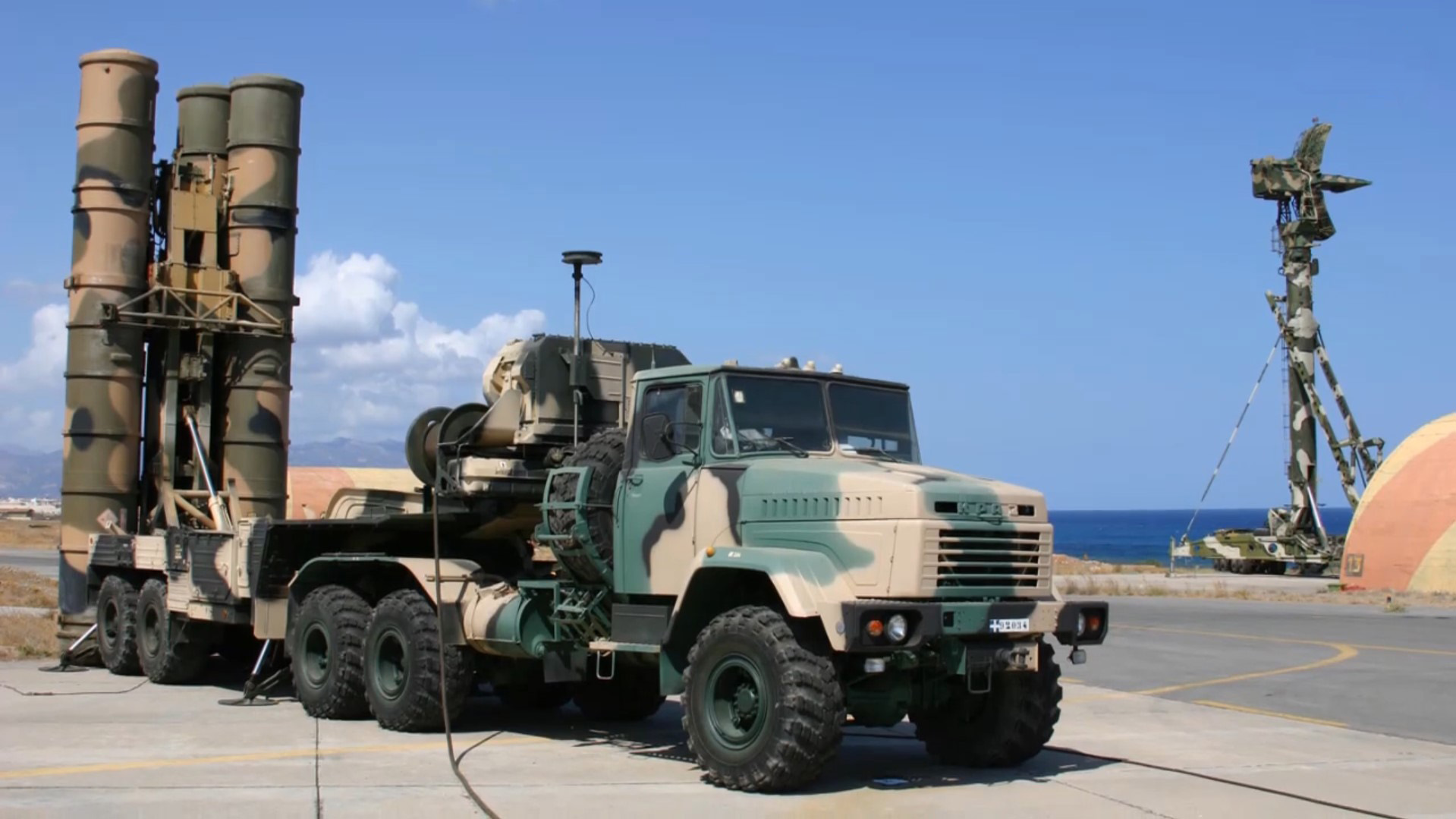Leaked secret Pentagon documents reveal status of Ukrainian air defense capabilities
A few days ago, alleged secret Pentagon documents appeared on different social networks which, if true, provide insight into the real state of Ukraine’s air defense capabilities.
The apparent leak of confidential intelligence reports on the war in Ukraine (and on US geopolitical actions in the world) is generating all kinds of questions and heated debates. Are they real? Are they the product of a Russian intelligence operation? Are they a US disinformation operation? We will probably never have definitive answers to these questions, but the information contained in these documents is consistent and many American media outlets give them a high degree of credibility.

On Ukraine’s air defense capabilities
The recovered document dealing with the Ukrainian air defense situation is very rich in information and evidences Kiev’s difficulties in coping with the Russian missile barrage.
Strategic and tactical air defense
The document (prepared in February 2023) suggests that by May, the Ukrainian S-300 (SA-10) missile systems will run out of missile stocks; and the BUK (SA-11) would have exhausted their missile reserves by March. These systems, inherited from the Soviet era, would represent 89% of its high and medium-range air defense capability.
This situation, coupled with the Ukrainian Air Force’s inability to establish an effective air-to-air defensive capability, allows free action by Russian bombers and fighters at medium and high altitudes. This also has a negative impact on the ability to resupply Ukrainian forces at the front by helicopters.
#Ukraine: A Ukrainian 9A310M1 TELAR of the Buk-M1 air-defense system was destroyed by a Russian Lancet loitering munition in #Donetsk Oblast. pic.twitter.com/t8F9v972le
— ?? Ukraine Weapons Tracker (@UAWeapons) April 10, 2023
As for other anti-aircraft systems such as the S-125 Nova/Pechora (SA-3), S-300V (SA-12), NASAMS, IRIS-T, etc., they are only available in small quantities and therefore their usefulness is limited to providing protection in sensitive areas and critical infrastructure.
Short-range air defense
The status of short and very short range air defense systems (Gepard, Crotale, MANPADS) is not bad and helps to mitigate the shortcomings of strategic and tactical air defense assets. However, despite the fact that they showed great lethality during the first phases of the conflict, the Russian Air Force (VVS) managed to modify its tactics and is deploying a new series of precision weapons, which significantly reduces the effectiveness of this type of anti-aircraft means.
Suggested course of action
Suggested short-term corrective measures are to seek more missiles for S-300 and BUK systems in U.S. allied countries (such as Greece, which has S-300s deployed in Cyprus) and to restrict the use of these anti-aircraft devices against the most cost-effective targets and in the protection of sensitive targets. Other measures such as increased suicide drone strikes against Russian airfields, expanded special forces operations behind enemy lines and greater use of deception tactics with false targets are also promoted.

In the medium term (three to six months) the delivery of Western air defense systems (I-Hawk, IRIS-T, NASAMS, Patriot, etc.) should be increased and mobile missile repair shops should be deployed.
The suggested long-term solution is to establish in Ukraine an integrated, digital, multilayered air defense system under NATO standards.
While it is true that this series of supposedly leaked secret documents could turn out to be an elaborate diversion, it should not be forgotten that for a lie to be effective, it has to contain as much truth as possible.

/https://aviacionlinecdn.eleco.com.ar/media/2023/04/S-300-e1681229485952.jpg)
Para comentar, debés estar registradoPor favor, iniciá sesión